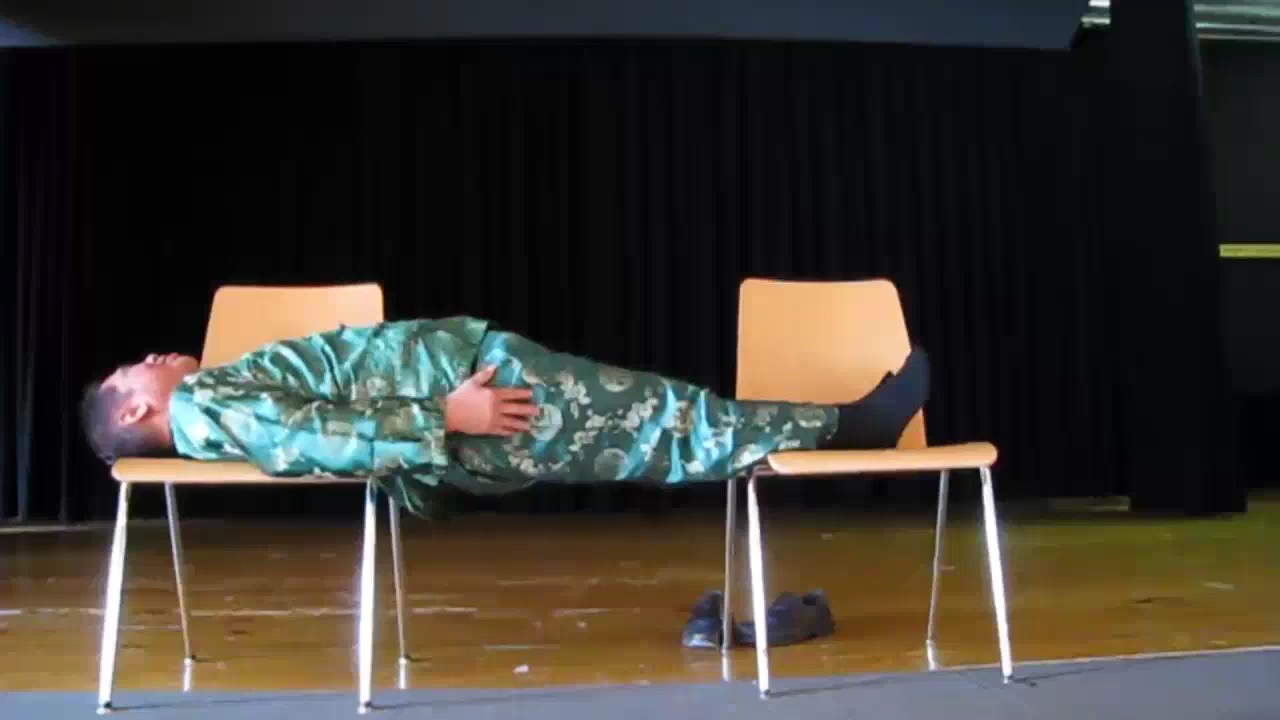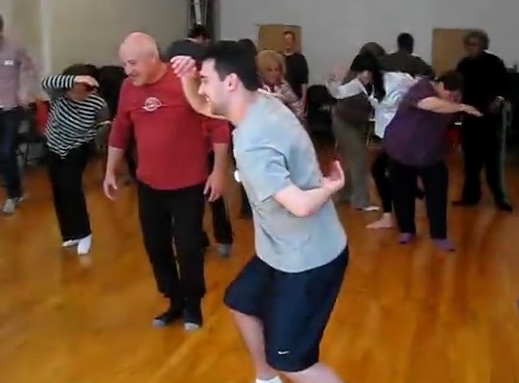SELECTION OF QUESTIONS AND ANSWERS
SEMPTEMBER 2022 PART 3

Qigong state of mind
Question 1
I have issues with my liver and spleen, but the issue which bothers me most is heart arrhythmia.
I have been doing qigong for about 1 and a half years and have had some benefits. But I have switched to your style of qigong now as I think I can make progress faster.
What do you recommend?
— Johnathan, Canada
Answer
The onus of qigong, or chi kung in usual English, is not what qigong exercises you perform, but the skills of practicing the exercises. In other words, it is skills rather than techniques.A good analogy is Taijiquan, or Tai Chi Chuan in usual English. Most people who practice "Taijiquan" have no internal force and cannot use their "Taijiquan" for combat. Their techniques are correct, even beautiful, but they lack the skills to develop internal force and to use the techniques for fighting.
Despite that you have some benefits, the "qigong" that you practice does not have the skills of entering into a qigong state of mind, and the skills of generating energy flow. More than 80% of "qigong" practitioners do not have the skills. Less than 20% practice genuine qigong, but of a low level. Their students eventually become teachers, and these teachers do not realize the difference between techniques and skills.
I do not mean to be presumptuous, but we in Shaolin Wahnam practice very high level qigong. So high that we enter into a qigong state of mind and generate energy flow within the first one hour. If you cannot enter into a qigong state of mind or generate energy flow within the first one hour, you don't have to pay the course fee. The money will be returned to you without questions.
But you need to pay for your airfare, your accommodation and anything you may purchase during the course. I would suggest that you come to Penang, Malaysia earlier or later for the course, and spend the time on your own. Travelling in Malaysia is cheap, and English is widely spoken.
With the world lockdown, I don't know when I shall offer the Intensive Qigong Course, but you can check on my website. You should also read The Unbelievable Intensive Chi Kung Course.
Question 2
When performing "Big Boss Offers Wine" in "One Finger Shooting Zen", where should the stretched out fist be -- right in front of the shoulder or somewhere between sternum and shoulder?
— Sifu Leonard Lackinger, Shaolin Wahnam Wien, Austria
Answer
When performing "Big Boss Offers Wine" in "One-Finger Shooting Zen", the fist should be between the sternum and the shoulders. It can be used as a "brush off" when extending the arm.
It means that when the fist is shot out, the arm brushes off the opponent's attacking hand, and immediately hits the opponent. It is a technique I learned from Sifu Choe Hoong Choy.
Very few people know of this technique. The opponent is hit as soon as he makes an attack. The cup-fist should connect. Whenever it is made, it should hit the opponent. It is known as "taap chooi", or "hammer fist".

I learned this secret from the Wing Choon patriarch, Sifu Choe Hoong Choy
Question 3
I wish to seek some further advise.
— Dr Foong Tuck Meng, Holistic Health Cultivation Centre, Kuala Lumpur, Malaysia
Answer
The students who just have taken our Tai Chi Chuan course will have a good protection against any illness. They will not be carriers as the disease is destroyed. They well have good health, vitality, longevity, peak performance and spiritual joys irrespective of religion
Question 4
I feel great and more energetic as compared with previously when I over-trained. My question is how come we can get over-training so easily when we practice very high level kung fu such as Iron-Plank Bridge and doing a set of Cosmos Palm? I still wish to train this two secret arts, but I wish to know how should I practice to avoid being over-trained.
Answer
It is wonderful that despite your training less, you have greater improvement. We are at a very high standard. It is true that a typical Shaolin Wahnam can get in one month what I would need more than a year in my student's days. You are not a typical student, you are one of my best and proudest disciples.
During my student days, I had very good teachers and I followed my teachers' instructions precisely. But I gained a lot during my teaching, not during my student's days. Much of what I gained during my teaching, like entering into a chi kung state of mind and smiling from the heart, I share with my students and instructors.
Why is it that we over-train so easily is because of our very high level. Remember what I gained in a year during my student's days can be achieved by a typical student in a month, and I was already of a high level in my student's days. Except a few times I had running nose and slight fevers, which was infrequent in my early days, I was never sick, which was the aim of chi kung; and especially after I learned from Sifu Ho Fatt Nam, I could defeat masters and professional fighters, which was the aim of kungfu.
It is very important that you must differentiate between my intensive and regional courses from regular classes taught by you. You must not practice the same way you teach. My intensive courses take a few days, and my regional courses take a few hours. You have to spread out what you practice.
A good way of practice is as follows. Take what I teach at an intensive course as 100%. Half the 100% will give 50%. Again, half the 50% will give 25%. 25% is quite close to 30%, which I recommend at intensive courses and also at regional courses. If you find 30% too high for your practice, you can lower to 20% or to 10%.
30% is very high for other people not in our school. Most other people practice gentle, physical exercise; and gentle, physical exercise does not provide good health, vitality, longevity, peak performance and spiritual joys irrespective of religion.

Iron-Plank Bridge
Question 5
Is it true that although our age is increasing, as we continue to practice the Shaolin arts we improve our energy becoming more powerful and healthier? Personally in my experience I can confirm that I am actually stronger and healthier than that when I was 20 years ago.
I listen to many stories about old-masters. Actually they are very powerful although their age are above 80s. My question is until at what age that our energy or power will go down hill? Or do we maintain such powerful energy until the day we leave this phenomenal world?
Answer
I practice my chi kung and kungfu twice a day. I can roll and jump on hard ground. But I practice at less than 30% for only about 15 minutes.
Iron-Plank Bridge and Cosmos Palm are two of the greatest arts. I suggest that you select Iron-Plank Bridge to be a Protector and an authority. It was the secret art of my third sifu, Sifu Ho Fatt Nam, the third generation successor from the Shaolin Monastery at Quanzhou.
I would suggest the following topics:
- What past masters wrote about Iron-Plank Bridge.
- What has been written for Iron-Plank Bridge.
- Your training in Iron-Plank Bridge.
- Your aha experiences.
- The benefits of Iron-Prank Bridge.
To avoid over-training, you should train at 30% or less.
We can be more powerful and healthier, but I believe there may be a limit in our phenomenal world. It is true that masters at the age above 80s can be very powerful and healthy. You are still young, and you are stronger and healthier than when you were 20 years ago.
Question 6
Every day, my wife, our daughter and I find good health, peace, happiness and a zest for life. Without your tireless work in spreading the Shaolin Arts, this would not be possible. Thank you again for illuminating the path and spreading the boundless treasures of Shaolin!
— Dr Steffen Wankmuller, Germany
Answer
It is wonderful that you and your family continue to practice your chi kung and kungfu every day, and find good health, peace, happiness and zest for life.
Chi kung and kungfu should be practiced every day. I practice every day, once in the morning and the other time in the evening.

Five-Animal Play of Shaolin Wahnam
Question 7
Thanks to stance training, the Art of Flexibility and my Dragon Strength practise, I find that I am already reasonably flexible, especially in comparison to most people my age. However, the flexibility of some practitioners of the Wudang Arts still fascinates me.
Please see this video for a reference: https://www.youtube.com/watch?v=8Up2Mnq7JSM.
Would it be useful for us to train to achieve this level of flexibility with the aims of good health, vitality and combat efficiency in mind? If so, how would we go about doing that?
Answer
Thank you for the flexibility exercises of Grandmaster Chen Shi Xing of the Five Animals, called Five Elemental Process Qigong of Wudang Kungfu. The level of flexibility of Wudang qigong and kungfu can certainly be achieved.
But we in Shaolin Wahnam train differently. If flexibility is one of your aims, you must maintain the flexibility exercises. You must not slack in your practice as our flesh and muscles grow rapidly.
Question 8
You kindly advised us to choose about 3 sequences and train them really well so that we may arrive at the marvellous level of combat. Would it be useful to also train the other remaining sequences or would it be best to just stick to about 3?
Answer
You can train 3 combat sequences from Essence of Shaolin really very well. If you like, you can add two or three more combat sequences.
It is not necessary to train the remaining combat sequences. The remaining combat sequences give us a very wide range of choice.
Any one of these combat sequences will lead us to the marvellous level. Even real masters may not have reached this marvellous level.
You have to be excellent at the marvellous level. First you have to follow the instructions of these combat sequences. Next, you modify the stances and spacing, like using a False-Leg Stance instead of a Bow-Arrow Stance, and adjusting the distance of the opponent. Then, you imagine the sequences of your opponent and respond accordingly.
You may use tactics and strategies. You have to hit your opponent but remember to take out the injury after hitting him. Or you may just pass your hands in front of him as if hitting him.
If you have any questions, please e-mail them to Grandmaster Wong via his Secretary at secretary@shaolin.org stating your name, country and e-mail address.
LINKS
Selected Reading
- Over-Training in the Practice
- The Wonderful Life that We Have
- The Historical Background of the Small Universe
- The Meaning of Jing in Relation to Jing, Qi and Shen
- The Use of Internal Force
